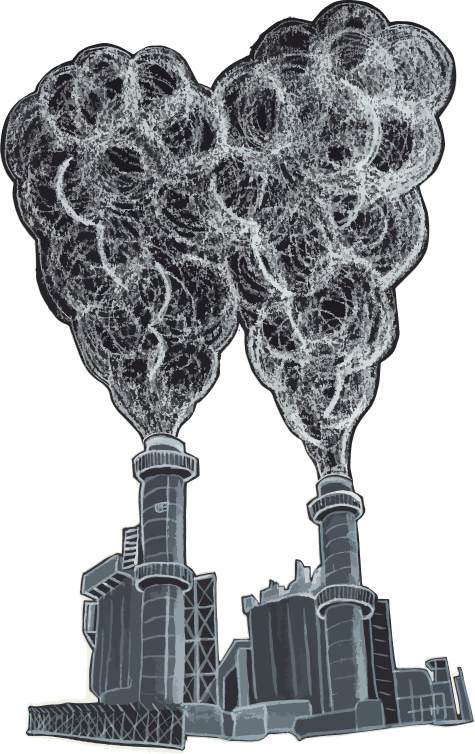Wyoming
Back to mapTo get to zero by 2050, Wyoming must cut emissions by 3.7% a year
Emissions in Wyoming
Million metric tons of carbon dioxide (CO2) equivalent (MTCO2e
) emissions
Note: Grey area indicates missing data due to processing delays.
Source: WRI, Mar 2021
This is how we're going to do it
- Boilers and furnaces with heat pumps
- Gas stoves with electric induction stoves
- No-till farming to keep CO2 in the soil
- Capturing methane leaks from landfills
- Capturing CO2 to make emissions-free concrete
- Burning green hydrogen to make emissions-free steel
- Plugging methane leaks from gas pipelines
Decarbonize Our Buildings
2% of Wyoming's climate pollution comes from buildings.
We burn fossil fuels to heat our air, water, and food.
To cut this pollution...
Let's electrify our heat!
We'll replace...
...in all of Wyoming's 387,000 buildings.
In fact, 29.9% of appliances in buildings in Wyoming are already fossil fuel free!
That means we only need to electrify the remaining 271,000 dirty buildings in Wyoming. That's around 10,000 per year.
Source: Microsoft, Mar 2021; NREL, Dec 2021Electrifying all buildings cuts 2% of the pollution.
Decarbonize Our Transport
9% of Wyoming's pollution comes from cars, trucks, trains, and planes.
But mostly from cars.
To cut this pollution,
your next car must be electric.
Or consider going car-free with public transit, bikes/e-bikes, car share, or other alternatives!
There are 191,000 vehicles in Wyoming and 330 are already electric (0.2% of the total).
We need to electrify (or replace) the remaining 191,000 gas-powered vehicles. That's around 7,000 a year.
Source: DOT, Feb 2021Electrifying all transportation cuts 9% of the pollution.
Decarbonize Our Power
45% of Wyoming's pollution comes from burning coal, gas, and oil to make power.

To cut this pollution...
Put solar panels on your roof!
Then, we'll replace all fossil fuel power plants with solar and wind farms.

...and find good jobs for those workers.
Current Fossil Fuel Power Plants in Wyoming
12 coal plants
Jim Bridger
Sweetwater County
2,442 MW
Laramie River
Platte County
1,710 MW
Dave Johnston
Converse County
922 MW
Naughton
Lincoln County
832 MW
Dry Fork Station
Campbell County
484 MW
Wyodak
Campbell County
402 MW
Neil Simpson II
Campbell County
130 MW
Wygen III
Campbell County
116 MW
Wygen II
Campbell County
95 MW
Wygen I
Campbell County
90 MW
Genesis Alkali
Sweetwater County
41 MW
General Chemical
Sweetwater County
30 MW
7 gas plants
Cheyenne Prairie Generating Station
Laramie County
220 MW
Neil Simpson II (CT2)
Campbell County
40 MW
Hartzog
Campbell County
23 MW
Arvada
Sheridan County
23 MW
Barber Creek
Campbell County
23 MW
Big Sand Draw Plant
Fremont County
8 MW
Beaver Creek Gas Plant
Fremont County
6 MW
2 oil plants
Lake (WY)
Teton County
3 MW
Old Faithful
Teton County
2 MW
But wait!
It's not enough to replace our power plants with wind and solar farms.
To power our electric cars and buildings, we need two times the electricity we have today.
In all, we'll need to build 2,000 megawatt (MW) of wind power and 3,000 MW of solar power.
Since the average wind turbine provides 2.75 MW of peak capacity, Wyoming would need to install about 788 turbines.
Since Wyoming already has 964 MW of wind and 22 MW of solar, that's 1,000 MW of wind power we need to build and 3,000 MW of solar power. That's around 45 MW of wind power and 98 MW of solar power a year.
Source: EIA, Apr 2022Decarbonizing all dirty power cuts 45% of the pollution.
And gives us zero-emissions power we need to eliminate pollution from buildings and cars!
Other Emissions
The last 44% of Wyoming's climate pollution comes from other sources...
This includes farming, landfills, industry, and leaks from gas pipelines.
There's no one solution to solve these problems, but there are lots of great ideas:
That doesn't mean there's no solution, it just means that clean electrification doesn't help with these problems, and you could fill a whole book with covering all of them. We need to encourage our politicians to invest in researching new solutions and implementing existing solutions to these problems!
Ready to do your part?
Learn how to electrify your own machines and pass local policy to electrify the rest
Take Action